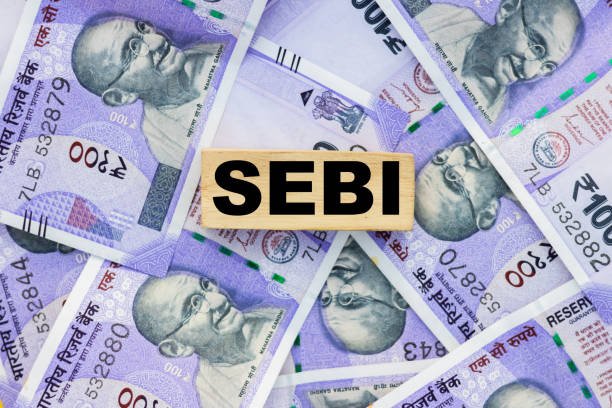What is SEBI?
The SEBI is the most substantial regulator of all securities markets in India. SEBI is equivalent to the Securities and Exchange Commission, also known as SEC, in the United States.
Its ultimate objective is to protect the interests of investors in their securities and promote the development of these securities and synchronize these securities markets for matters connected in addition to that or incidental thereto.
The Securities and Exchange Board of India (SEBI) is a very important leading regulator of security markets in India. SEBI is known to have wide-ranging investigative, regulatory, and enforcement powers that comprehend the ability to demand fines for those who outlaw the given set of rules.
SEBI has also been criticized as it exhibits a lack of transparency and direct accountability to the investors for an institution with such extensive powers.

How was SEBI established?
With the atmost influence of the Securities and Exchange Board of India Act by India’s parliament, The Securities and Exchange Board of India (SEBI) was officially introduced and authorized in April 1922 in its modern personification.
SEBI replaced the Controller of Capital Issues, which had initially modulated the securities markets under the Capital Issues (Control) Act of 1947, which was passed just a few months before India gained independence from British rule.
As the 1970s ended and the 1980s began, capital markets began to appear as the new showstopper among the people of India.
Malpractices had begun to take on in the market as well. Some of these malpractices were unofficial self-styled merchant bankers, rigging of prices, non-adherence to provisions of the Companies Act, delay in delivery of shares, and so on.
Read: Best Stock Market Quotes to Motivate You
As these malpractices took a toll on the market, people felt deceived and began to lose their confidence in the stock market, which, in turn, slowed down the market. This greatly affected the government; hence, the Securities Exchange Board Of India (SEBI) was introduced to the market.
SEBI focuses on the protection of those who invest in the stock market. More rules and regulations were introduced to scrutinize security, make the system a little more transparent, and enable systematic stock market operation.

What is the Structure of SEBI?
SEBI’s structure comprises 9 members.
- The chairman, the head, is elected by The Union Government of India.
- Two representatives are from Union Finance Ministry.
- One representative is from the Reserve Bank Of India.
- The Union Government of India selects the rest five representatives of the SEBI.
There are different departments in SEBI, and there are heads controlling each department. There are a total of twenty departments that run under SEBI.
- Economic and policy analysis
- Corporation finance
- Human resources
- Debt and hybrid securities
- Investment management
- Enforcement
- Legal affairs
- Commodity derivatives market regulations
What is the Tenure of the Chairman of SEBI?
With respect to the SEBI Act, the chairman of SEBI will be designated maximum for a time period of five years or till sixty-five years of age, whichever is earlier.
What is the Role of SEBI in the Stock Exchange?
The Securities Exchange Board of India takes measures like a safety inspector for those who wish to participate in the stock market in India. SEBI aims to provide a safe and protected environment for retail investors and those participating in the securities market. It also guarantees the smooth and effective operation of the stock market. This bureaucratic authority plays a very important role in the economy.
There are three major participants in the financial market that are taken care of:
1. Issuers Of Securities
A legalized body that develops, registers, and sells securities to capitalize on the operations carried out are termed an Issuer. Issuers can either be investment trusts, domestic or foreign governments, or corporations.
These entities are in the corporate discipline that brings up funds from sources of different fields in the market.
This organization ensures that they get a healthy, secure and transparent environment with respect to their needs.
2. An Investor
In the stock market, the investors play a very prominent role as they happen to be the most active authorities in the market. This bureaucratic authority is responsible for the maintenance of the stock market. It makes sure to keep out the malpractices to restore the general public’s confidence and investors in the market.
3. Financial Intermediaries
Firstly, Who is a stock intermediary? An individual who takes measures on behalf of another individual who is associated with swaps, futures, or options trading.
Apart from a buyer or a seller, entities or people participate in transactions. These people or entities are termed intermediaries. They are like the middleman for issuers and investors to supervise the safety of the transactions that will be made.
There are two divisions in the financial market: the primary and the secondary. The intermediaries in both these markets usually appear to be different in both.
How does the Functioning of SEBI happen?
The development of SEBI was done to safeguard and protect investors’ interests in the security market. There are many functions of SEBI, but there are 3 primary functions.
- Protective Function
- Regulatory Function
- Development Function
A. Protective Function
The protective function exhibits a role that SEBI intends to perform in safeguarding the investor interest and also of other financial participants.
It comprises the following activities:
1. Checking Price Rigging
Price rigging is an action that causes abnormal fluctuations in the price of the securities, which either increases or decreases the regular market price of stocks, which can lead to unnecessary losses for investors.
2. Prevent Insider Trading
Insider trading is an action that depicts either buying or selling securities by insiders of a company.
3. Promote Fair Practices
SEBI aims to promote only fair trading practices and works towards forbidding deceitful activities that are in relation to trading.
4. Provides Financial Education to Investors
SEBI educates people by organizing online workshops, webinars, and offline sessions that help people better understand how finances work in the stock market.
Also Read: TOP 10 STOCK MARKET BOOKS FOR BEGINNERS
B. Regulatory Functions
Regulatory functions are fundamentally practiced to keep a check on the performance of the business in the financial markets.
These functions are comprised of the following:
- Scheming out guidelines and code of conduct for perfectly functioning financial intermediaries and cooperates.
- Regulating the acquisitions of the companies.
- Conducting inquiries and audits for exchanges
- Registration of brokers, merchant bankers, and so on.
- Levying of fees
- Exercising and performing powers
- Registering and regulating the credit rating agencies.

C. Development Functions
The development function is a regulatory authority that performs a particular development function that also comprises the following but not limits itself to:
- Offering training to intermediaries.
- Promotion of fair trading practices and minimalizing malpractices.
- Executing related research works.
- Motivating and supporting self-regulatory places of organizations.
- Support buying and selling mutual funds directly from AMC with the help of brokers.
Organizational Structure of SEBI
Following this board of SEBI, the organization is further divided into twenty-four departments that are appointed to this jurisdiction of the Ministry of Finance as one single entity.
1. Commodities Derivatives Market Regulation Department
This department is primarily important for maintaining surveillance of the working Commodity Derivative Segments of the Stock Exchanges or the recognized Clearing Cooperations and supervising them as a whole.
This role has been perceived by nine divisions of the department, namely:
- Division of exchange administration
- Division of complaints
- Division of investors’ awareness 1
- Division of investors’ awareness 2
- Division of market policy
- Division of new products
- Division of risk management
- Division of products
- Division of inspection
2. Corporation Finance Department
In this department, it is necessary to work around the following criteria:
- Issuing and listing of the securities.
- Schemes that comprise the mergers, accumulations, divisions, and reduction in the finances.
- Governance of corporate organizations and also the auditing criteria.
- Re-organizing corporate organizations through mergers, takeovers, or buybacks.
- Delisting of a security.
3. Cooperation Finance Investigation Department
This department is responsible for investigating matters related to financial fraud, diversion of funds, non-compliance with rules, and misconduct in fiscal issues.
4. Department of Economics and Policies Analysis
The Department of Economic and Policy Analysis takes care of statistics, publication, and regulatory research matters. Additionally, this department has responsibilities that revolve around the foundation of details and regulatory developments.
5. Department of Debt and Hybrid Policies
This department is majorly concerned with matters related to corporate bonds, debt securities, and shares. This is usually done through the operation of 3 divisions that supervises the primary issuance and debt securities policy, post-listing compliance, and Municipal Bonds and Green Bonds, respectively.
6. Department of Enforcement 1
The department of enforcement 1 takes care of the appeals reported against SEBI in the Securities Appellate Tribunal (SAT). The division that operates under this department is the Division of Regulatory Action.
7. Department of Enforcement 2
This department is pretty much similar to the functions of the Department of Enforcement 1. The functions of this department revolve around resolving the matters registered with SAT as well.
The divisions that work under the jurisdiction of this department are as follows:
- SAT litigation division
- Prosecution division
- Settlement division
8. Enquiries and Adjudication Departments
The department of Enquiries and Adjudication majorly takes care of the quasi-judicial issues and adjudicates with those matters that are reported against the violators as per the jurisdiction of SEBI.
9. General Services Department
The General Services Department takes care of the internal working of the organization. The following divisions work under the leadership of this department:
- Treasury and accounts department
- Facilities management department
- Official language division
- Office and secretary to the board
- Protocol and security department
Interesting Read: Stock Market Timings in India – BSE & NSE
10. Department of Recovery and Refund
The department of recovery and refund takes care of procuring recoveries from defaulters who fail to pay dues. The divisions that work under this department are as follows:
- Recovery division 1
- Recovery division 2
- Recovery division 3
- Special enforcement cell

11. Human Resource Department
The human resources department takes care of foreign investors who have invested in the securities market and deals with the custody of securities in the international markets.
12. Information Technology Department
The department of information and technology is known to hold technological operations in the organization.
13. Integrated Surveillance Department
The department of integrated surveillance takes care of the monitoring of all the domains of the securities market.
14. Department of Investigation
The department of investigations is majorly concerned with investigating and inspecting matters of a susceptible breach in the securities market. This department also anticipates the leads to the Department of Enforcement for further procedures in the judicial empire.
15. Investment Management Department
This department takes care of the management of financial investments in the securities market.
16. Department of Legal Affairs
The department of legal affairs is obligated to produce the legal consultation to the board of the organization, and it also manages the functions through the following divisions:
- Division of Policies – General
- Division of Policy and regulatory affairs for commodity derivatives
- Division of regulatory assistance – General
- Division of regulatory affairs for commodity derivatives
17. Department of Market Intermediaries Regulation and Supervision
The market intermediaries’ regulation and supervision department operates along the lines of supervision of market mediators and regulates their functioning from registration to inspections.
18. The Department of Market Regulation
In this department of market regulation, we tend to observe that it majorly handles all the infrastructure of market institutions that include the stock exchanges and also supervises their functioning all around. The divisions that operate under this department are:
- Division of policy
- Division of SRO administration
- Division of risk management and new products
- Division of market supervision
- Investors complaint cell
19. Office of International Affairs
In this department of the Office of International Affairs, we see that the main goal is to encourage the regulation of the securities market that is in consultation, and that is also with respect to foreign bodies and other organizations like that of SEBI. It is also known to aim to operate in favor of investors’ protection by actively involving foreign regulatory bodies and organizations as well.
20. Office of Investor Assistance and Education
The department of investor assistance and education majorly concentrates on imparting investor education and leading investors in the correct direction. To add on to this, we have come to understand that the department is highly expected to guide and help the investors and also works in order
to manage the complaints that are related to the transfer of securities, company listings, governance matters, and so on.
21. The Office of the Chairman
Here, we see that the Office is exclusively led by the Chairman of SEBI which has two divisions that are led by it – Communications Division and Executive Assistant.
22. The Regional Offices
Here, the regional offices are highly expected to operate and work in companion with the lines of the organization’s perception and also are expected to report to the regional heads.
23. The Department of Vigilance
The Chief Vigilance Officer leads this department of vigilance. There appear to be two roles: major and primary role to this department. The role is to determine all the occuring inconveniences within the organization, work in the direction to end the corruption that happens within the organization and take certain preventive measures.

Power of SEBI
When we talk about the powers of SEBI, three major powers are involved in this organization. They are:
1. Quasi-Judicial
The first and primary power involved in this organization is that it has very restricted powers when it comes to proclaiming judgments in matters that include fraud or even misconduct in the securities market.
2. Quasi Executive
This organization also holds powers to integrate rules and regulations and execute legal actions to appoint an atmosphere of righteousness and translucency in the market.
3. Quasi Legislative
This is said to be the third power of SEBI. It is also said to descend underneath the disciplines of legislation. The organization exhibits a power that allows the formulation of laws and also allows them to craft policies to safeguard the rights of investors and control violence.
To add to the above, SEBI takes care of certain operations that are overlooked by the Supreme Court of India and the Securities Appellate Tribunal (SAT). When this happens to reach the stock exchanges, SEBI reads to bear the power and authority to handle and authorize any form of decrees associated with the stock exchanges’ operations.
The organization is also said to hold certain powers that help to get access and authority over the books of records and the accounts for all the stock exchanges. It has the power to schedule and regulate the occasional checks and returns that happen in the functioning process of the stock exchanges.
Also Read: Top 10 Stock Market Tips for Beginners
SEBI also holds the power to handle hearings and pass judgments in certain cases where malpractices have been identified in the stock exchanges. Concerning the reception of companies, SEBI has the power to also get these companies listed and de-listed from any of the stock exchanges across the country.
SEBI has the power to thoroughly manage all the places of perception with respect to insider trading and also proclaim penalties and expulsions when a company has been caught in unethical activities.
The SEBI organization demands that companies list their shares on stock exchanges that are more than one and address if they perceive it to be profitable to investors. When we talk about investor protection, SEBI is known to hold power to jot down legal rules and regulations to guarantee the protection of the general public.
It also exhibits the power to handle the registration of brokers and any other in-betweener prone to deal with the investors in the market.

SEBI and Mutual Funds
Mutual funds are usually managed by the Asset Management Companies (AMC), which must be authorized by SEBI. In the authority of the SEBI, a registered Custodian tends to hold the securities of diverse methods of the all funds and entities.
The AMC trustees aim to observe and pinpoint the enactment of the mutual fund and are also said to guarantee that it aims to function in adherence to the SEBI rules and Regulations.
Recently, a self-regulation agency that handles mutual funds has been introduced and authorized and called the Association of Mutual Funds of India (AMFI). AMFI mainly concentrates on developing and improving the Indian mutual fund industry in a righteous and professional method.
AMFI also strives to improve the functional benchmarks to all extents with the primary logic to guard and foster all the mutual funds and also their stakeholders.
FAQs
1. What is SEBI’s full form?
Stock Exchange Board of India.
2. What does SEBI aim to do?
SEBI is said to protect the investor’s interests in the securities.
3. What is its function?
SEBI maintains 0the functioning of the stock market, mutual funds, etc., and safeguards the investors’ interests.
4. In the Indian financial system, what is the SEBI’s role?
SEBI’s role in the Indian financial system is appropriately handling the Indian stock market. SEBI was created to safeguard the interests of traders in the Indian stock market.
5. What are the duties carried out by SEBI?
The responsibility of SEBI is to control the Indian Capital markets. It has to observe and handle the stock market closely and implement specific decrees and regulations.
Recent blog
Course
- Unlocking the Mysteries of Bull Markets: A Comprehensive Guide
- Understanding Blue Chip Stocks: Definition, Examples, and Investment Strategies
- Understanding Volatility: What Is Volatility in the Stock Market?
- Understanding Bear Market: Types, Causes, and Consequences
- Understanding Demat Market: Features, Benefits, and Types of Demat Accounts





